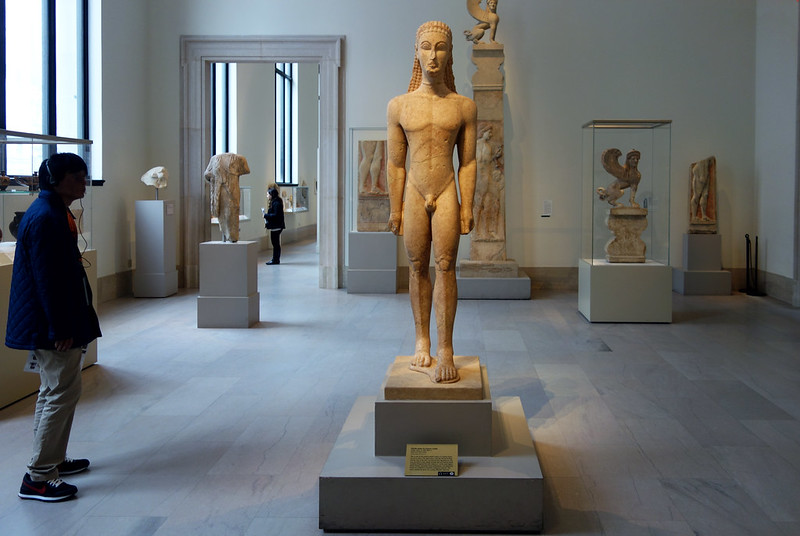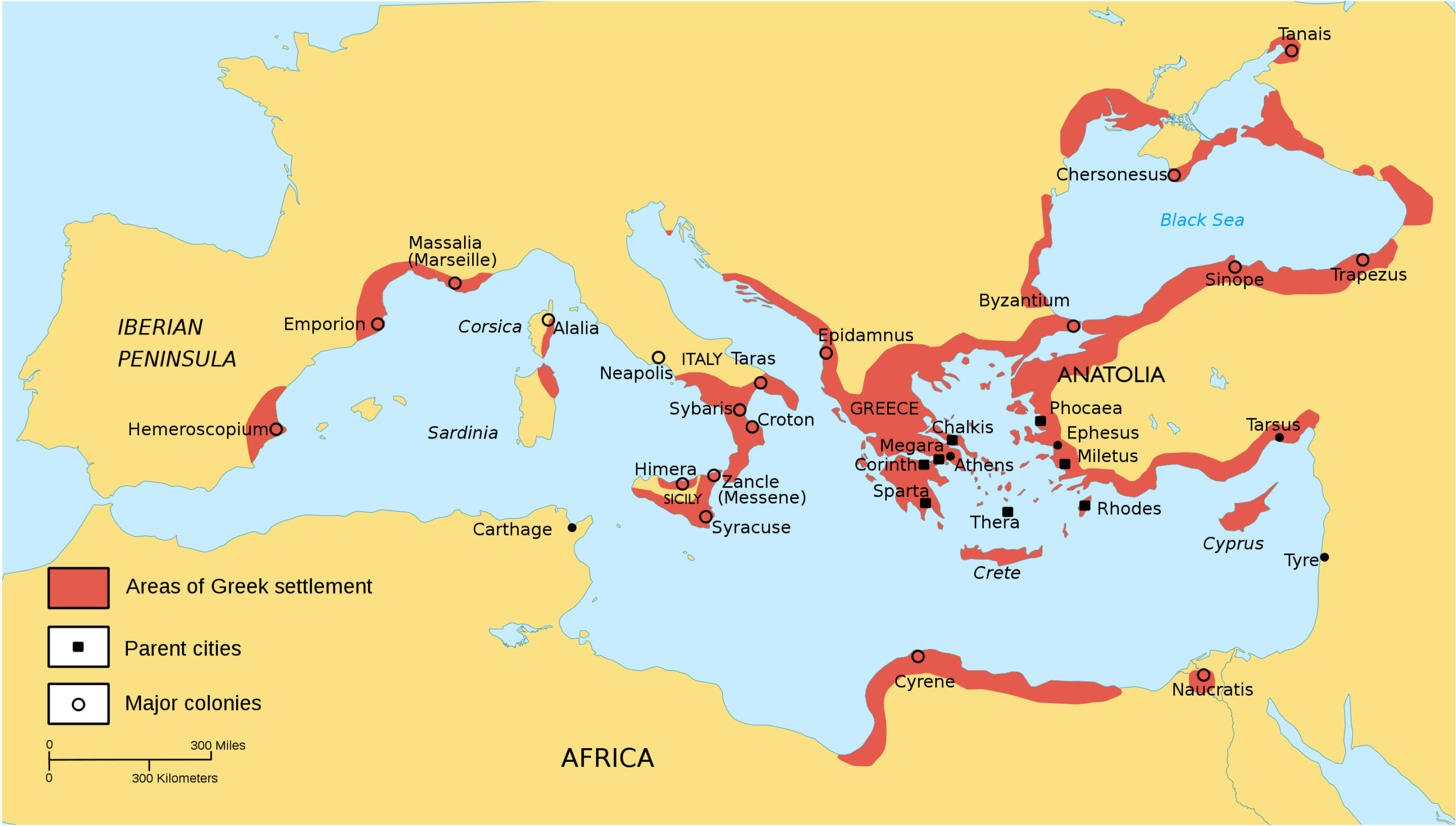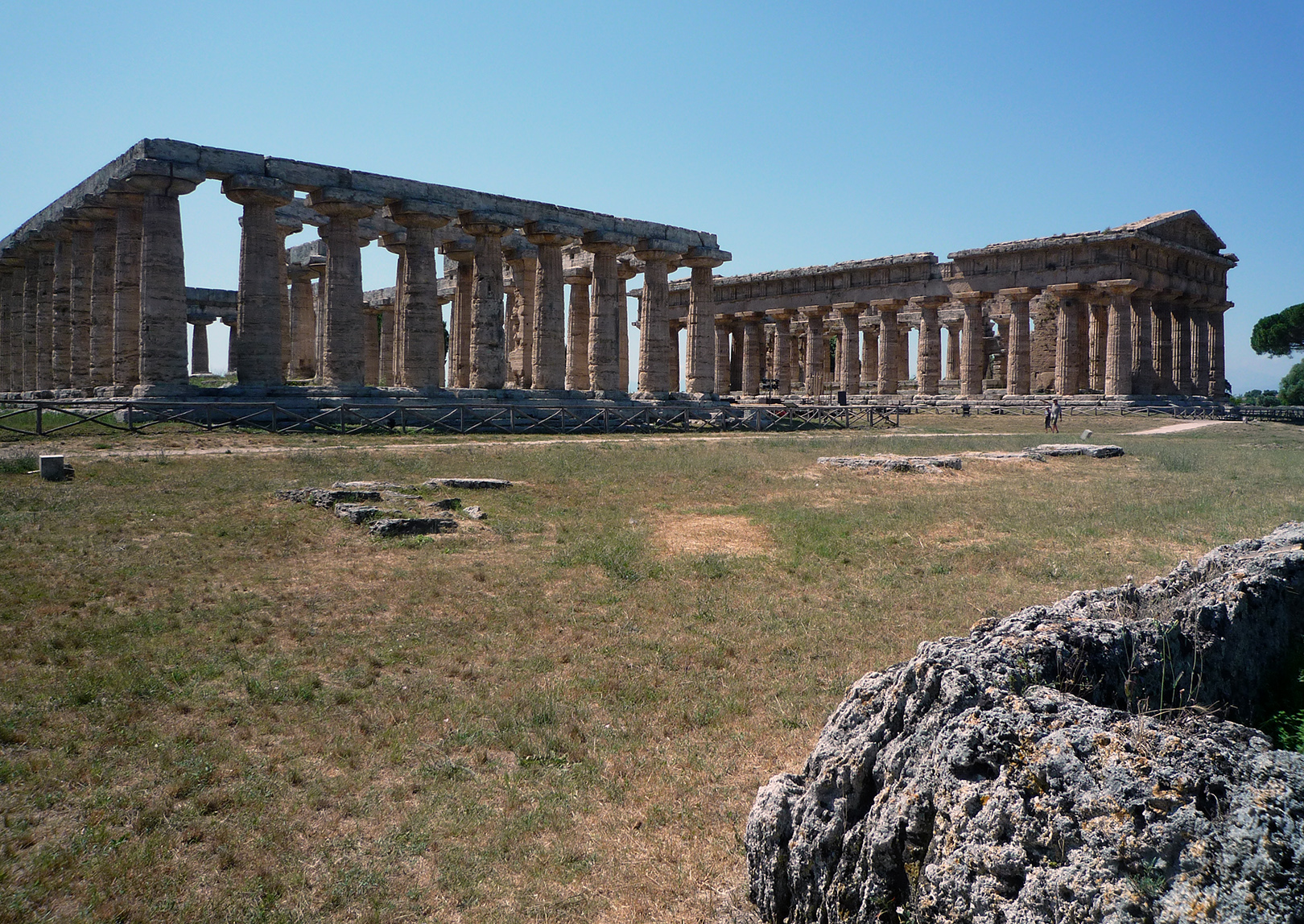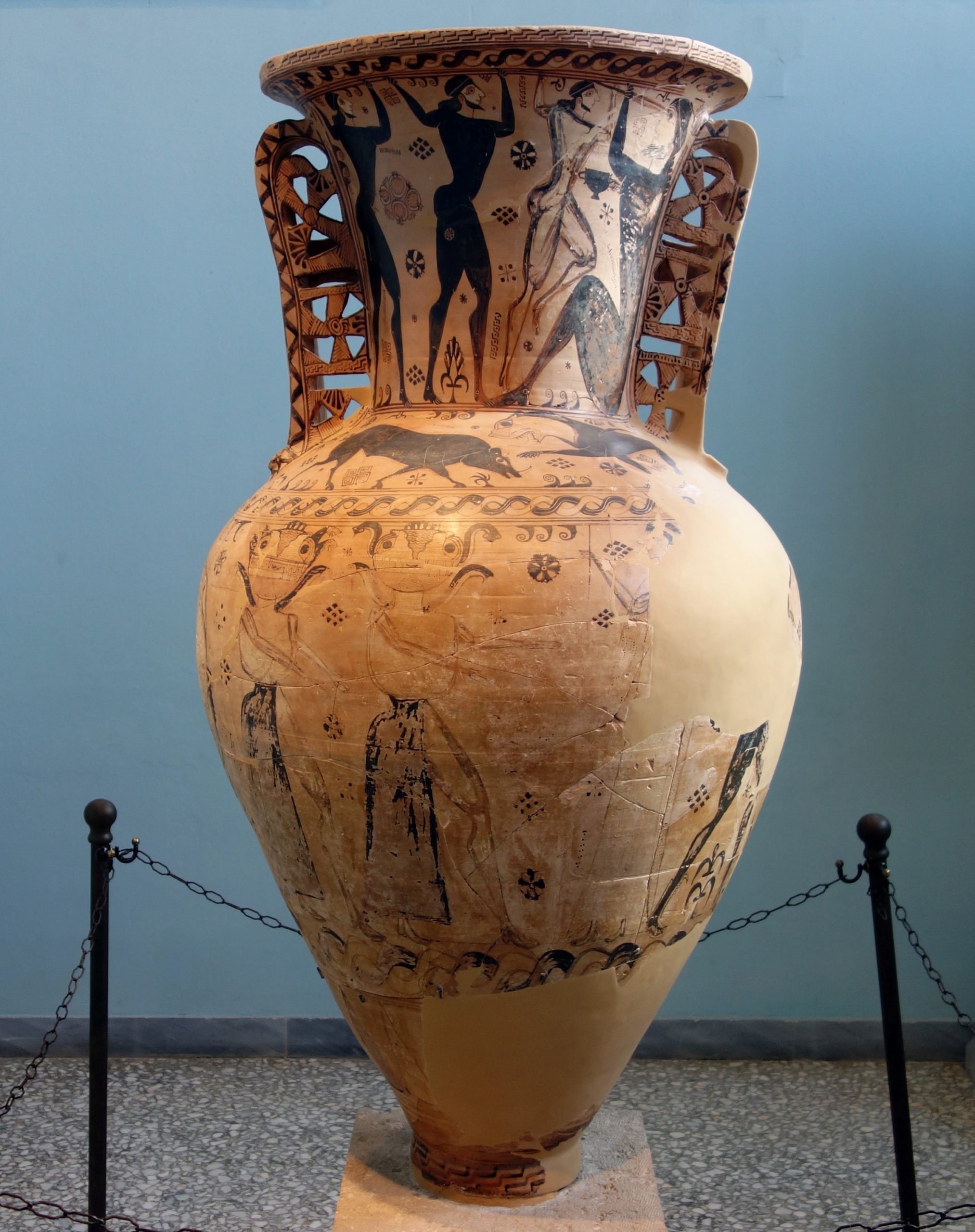2.1 Geography and History
Greece and the Mediterranean

Contemporary popular culture regularly presents ancient Greece as an exceptional place—from movies like Disney’s Hercules and Clash of the Titans, to video games like Assassin’s Creed: Odyssey and God of War, and books like the Percy Jackson series. These movies, artworks, and novels depict the mythological exploits of heroes and gods against a background of shining white marble sculpture and architecture or present Greece as a utopian society that celebrated art, philosophy, and democracy. It is a vision of Greece that has been filtered through renaissance, eighteenth-, and nineteenth-century European ideals, and the reality rarely fits within these preconceived notions. Art was an important part of Greek culture. Yet, Greece was not the site of an isolated artistic miracle, but rather part of a larger Mediterranean world and heavily influenced by their neighboring societies. Greek sculptures were originally brightly painted in color. And the majority of Greek states limited the rights and freedoms of all except their male citizens.


Who were the ancient Greeks? In this study of the art of the ancient Greek world, we look beyond the borders of the modern nation state of Greece. People who identified as Greek thousands of years ago lived in a much broader region, producing art in Greek styles and with Greek subjects. Being Greek was not a nationality, but rather a multifaceted identity that, in this period, was defined by a combination of ethnic, linguistic, religious, and cultural factors. Notably you were Greek if you spoke Greek (non-Greek speakers were known as barbarians, since the Greeks described them as speaking bar-bar, or nonsense), if your ancestors were Greek, you worshiped the Greek gods and had common cultural touchstones (such as a knowledge of Homer), and a shared ethical system. Cities in mainland Greece, beginning in the eighth century B.C.E., established colonies across the Mediterranean and the Black Sea, notably in South Italy and Sicily and Anatolia (today, Turkey). For instance, some of the best-preserved Greek temples are in Italy, such as the temples at Paestum, where they were built by Greek colonists and their descendants.
The Polis
Most of Greece in the period under discussion was divided into city-states known as poleis (polis singular)—such as Athens or Sparta. Each polis was independent, with its own government, military, and economic system, and a Greek’s nationality was defined by their polis. The majority of the poleis were either oligarchies or tyrannies, with some monarchies and democracies. There were resultant cultural differences, with variations in language, gender roles, and social organization across the poleis. Most poleis controlled both the urban center and the surrounding rural space, and their populations were made up of citizens, non-citizens, and slaves. The male citizens were usually eligible to take part in civic government, while female citizens were not. Non-citizens were more restricted in their rights and participation in public life, and slaves were given few or no rights or autonomy.
Situating Greece within the Wider Mediterranean

Greece was part of a wider ancient world, connected to other civilizations in the Mediterranean and West Asia through diplomatic and economic ties, notably through trade routes that facilitated the exchange of physical goods and people as well as ideas. Art from Egypt, West Asia (the Near East), and Etruria in the Italic Peninsula was brought to Greece, and Greek art was exported. The art of ancient Greece was heavily influenced by that of their neighboring societies. The seventh century B.C.E. is frequently referred to as the Orientalizing period, due to the influence of Egyptian and Near Eastern art on the style and subject matter of Greek art in the period, such as the Eleusis Amphora.

